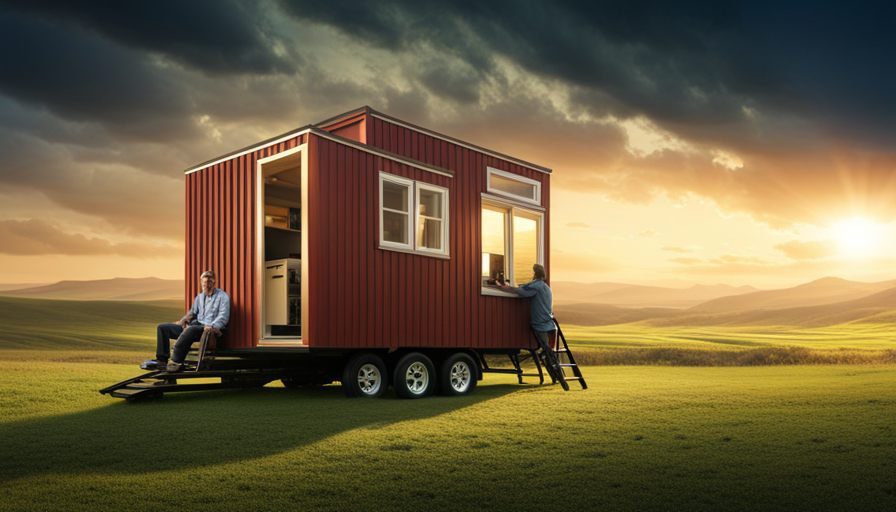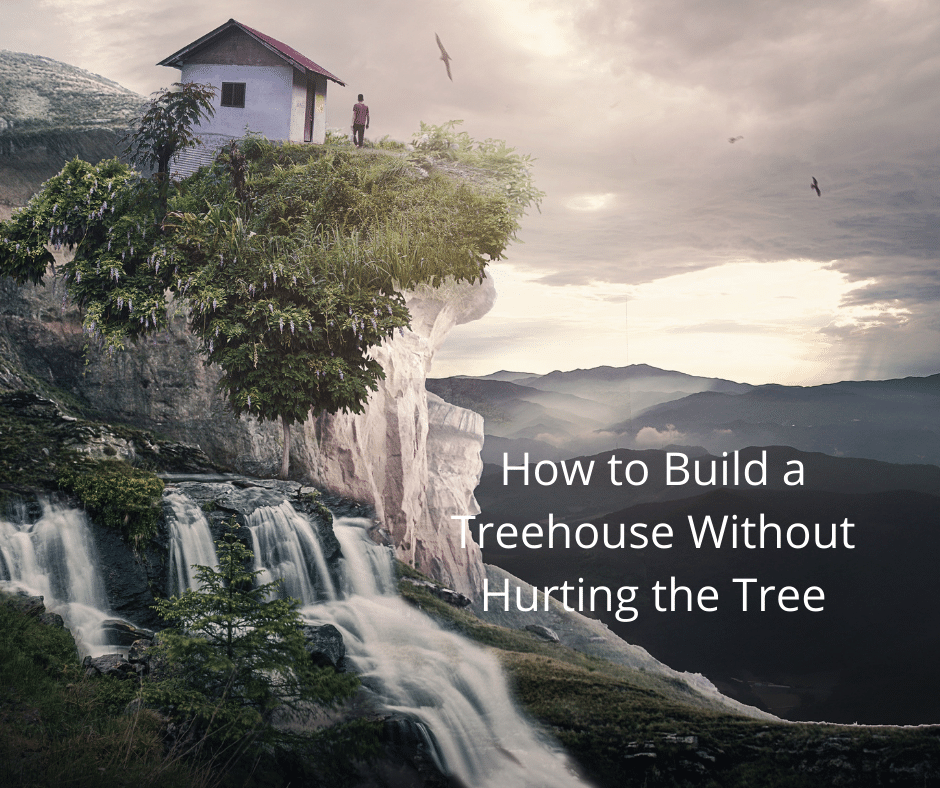Have you ever dreamt of living in a small home, having the freedom to travel wherever you please? If you’re considering embracing the tiny house lifestyle, it’s important to consider the size of the truck needed to tow your compact dwelling.
It’s like Goldilocks and the Three Bears – you don’t want a truck that’s too small, or too big, but just right. But how do you determine what size is just right?
In this article, we’ll delve into the world of tiny house towing and explore the factors that will help you choose the perfect truck for your needs. From understanding the weight and dimensions of your tiny house to researching towing capacity and choosing the right hitch setup, we’ll cover it all.
So, let’s get started on this exciting journey of finding the perfect truck to tow your tiny house!
Key Takeaways
- Size of truck needed is determined by the towing capacity required for the tiny house.
- Proper weight distribution and balance within the tiny house is essential for safe towing.
- Different types of hitches (bumper pull, gooseneck, fifth wheel, pintle) should be considered based on truck compatibility and towing needs.
- Safety precautions such as checking balance, ensuring proper hitch installation, and maintaining balance and stability during transport are crucial.
Understanding the Weight and Dimensions of Your Tiny House
To understand the weight and dimensions of your tiny house, you’ll need to imagine yourself carefully measuring every nook and cranny and envisioning the perfect truck that can effortlessly tow your cozy abode.
When it comes to towing a tiny house, weight distribution is key to ensure towing safety. You need to consider the weight of your tiny house, as well as the placement of heavy items such as appliances and furniture. Distributing the weight evenly throughout the house will help prevent swaying or fishtailing while on the road.
Additionally, it’s important to research the towing capacity of different trucks to find the one that can handle the weight of your tiny house. This will ensure a smooth and safe towing experience.
Now, let’s dive into the next section about researching different trucks’ towing capacity.
Researching Towing Capacity of Different Trucks
When researching different trucks, it’s important to consider their towing capacity for pulling a tiny house.
The towing capacity of a truck refers to the maximum weight it can safely tow. As you explore different truck models, keep in mind the weight and dimensions of your tiny house, as well as any additional weight from belongings or modifications.
To help you make an informed decision, here are three key factors to consider:
-
Research the towing capacity of each truck model you’re interested in to ensure it can handle the weight of your tiny house.
-
Take into account the cost of towing a tiny house, including fuel consumption and potential maintenance expenses.
-
Consider the reliability and durability of the truck, as you’ll want a vehicle that can handle long trips and various road conditions.
By thoroughly researching and evaluating different truck options, you’ll be able to match the right truck to your tiny house seamlessly.
Matching the Right Truck to Your Tiny House
Ready to find the perfect match for your pint-sized palace on wheels? When it comes to matching the right truck to your tiny house, there are a few things to consider.
After researching truck options, it’s important to take into account your budget constraints. You want to find a truck that not only has the towing capacity to handle your tiny house, but also fits within your financial means. Look for trucks that have a high towing capacity and are known for their reliability.
It’s also a good idea to consider the size and weight of your tiny house when choosing a truck. By taking all of these factors into consideration, you can ensure that you find the perfect truck to tow your tiny house.
Now, let’s move on to choosing the right hitch and trailer setup.
Choosing the Right Hitch and Trailer Setup
When it comes to choosing the right hitch and trailer setup for my tiny house, I need to understand the different types of hitches available. This will help me make an informed decision and ensure that my tiny house is securely attached to the truck.
Additionally, I need to determine the best trailer setup that suits my specific needs and preferences, considering factors such as weight distribution and towing capacity. By having a good understanding of these key points, I can confidently select the appropriate hitch and trailer setup for a smooth and safe towing experience.
Understand the different types of hitches available
To effectively tow a tiny house, it’s crucial to know the various types of hitches you can use. Here are four key types of hitches that can ensure weight distribution and trailer safety:
-
Bumper Pull Hitch: This type of hitch is commonly used for smaller tiny houses and attaches to the bumper of your truck. It provides a stable connection but may not be suitable for larger houses due to weight limitations.
-
Gooseneck Hitch: Designed for larger tiny houses, this hitch connects to the bed of your truck, allowing for better weight distribution and maneuverability. It offers a more secure connection and is ideal for long-distance towing.
-
Fifth Wheel Hitch: Similar to a gooseneck hitch, this type connects to the bed of your truck but offers a wider range of motion. It distributes weight evenly and provides excellent stability.
-
Pintle Hitch: Often used for heavy-duty towing, this hitch provides a strong connection and is suitable for larger tiny houses.
Understanding the different types of hitches available will help you determine the best trailer setup for your tiny house, ensuring a safe and smooth towing experience.
Determine the best trailer setup for your tiny house
Choosing the appropriate hitch for your tiny house is crucial, as statistics show that using the wrong type of hitch can lead to instability and increased risk of accidents during towing.
To determine the best trailer setup for your tiny house, there are a few best practices to consider. Firstly, make sure the hitch is compatible with your truck and can handle the weight of your tiny house. Common mistakes include using a hitch that’s too small or not properly secured, which can result in dangerous situations on the road.
Additionally, ensuring proper weight distribution and balance is essential for a safe towing experience. This can be achieved by properly loading your tiny house and making any necessary adjustments to achieve an even weight distribution.
By following these steps, you can ensure a smooth and secure journey for your tiny house.
Ensuring Proper Weight Distribution and Balance
When it comes to ensuring proper weight distribution and balance in my tiny house, I make sure to distribute the weight evenly within the structure. This helps to prevent any potential issues during towing, such as swaying or instability.
Additionally, I always check the balance of my tiny house on the trailer to ensure that it’s evenly distributed from front to back and side to side. This ensures a smoother and safer towing experience overall.
Distribute the weight evenly within your tiny house
Ensure that the weight inside your tiny house is evenly distributed, creating a balanced and stable towing experience. To distribute weight effectively, consider the following leveling techniques:
- Use a leveling tool to ensure the floor is perfectly level.
- Place heavier items such as furniture and appliances near the center of the house.
- Distribute weight evenly on both sides of the trailer.
- Secure loose items to prevent shifting during transportation.
- Avoid overloading one side of the house, as it can lead to instability.
By following these guidelines, you can ensure that the weight is evenly distributed within your tiny house, making it easier to tow and reducing the risk of any imbalances or instability.
Now, let’s move on to the next section and check the balance of your tiny house on the trailer.
Check the balance of your tiny house on the trailer
Checking the balance of your tiny house on the trailer is crucial for a safe and stable towing experience. When it comes to towing a tiny house, it’s important to ensure that the weight is evenly distributed within the structure. This will help prevent any potential issues such as swaying or tipping during transport.
To check the balance, start by checking the trailer stability. Make sure that the trailer is level and properly attached to the towing vehicle. Additionally, ensure proper hitch installation to provide a secure connection between the vehicle and the tiny house.
By checking these factors, you can ensure that your tiny house is balanced and ready for towing.
Now, let’s move on to the next step of obtaining the right licenses and permits for your tiny house journey.
Obtaining the Right Licenses and Permits
To successfully navigate the process of obtaining the right licenses and permits, you’ll want to acquaint yourself with the necessary paperwork and local regulations. It’s crucial to ensure that you have all the necessary permits in place before towing your tiny house.
Start by researching the specific requirements in your area and identifying the permits you need. This may include building permits, transportation permits, or temporary use permits. Understanding the legal requirements will help you avoid any potential issues or fines during the towing process.
Once you’ve obtained the necessary permits, it’s time to move on to the next section about practicing safe towing techniques. Safety should always be a top priority when towing a tiny house, and knowing the proper techniques will help ensure a smooth and secure journey.
Practicing Safe Towing Techniques
When it comes to hitting the road with your compact dwelling, it’s essential to prioritize safety by mastering the art of secure towing techniques. Practicing safe towing techniques not only ensures the safety of yourself and others on the road but also protects your tiny house from potential damage.
Here are some key tips to keep in mind:
-
Maintain proper tire pressure: Before embarking on your journey, check the tire pressure of both your truck and the trailer. Properly inflated tires provide better stability and control while towing.
-
Distribute weight evenly: Make sure to distribute the weight of your tiny house evenly across the trailer. This helps maintain balance and reduces the risk of swaying or fishtailing.
-
Use safety chains: Always connect safety chains between your truck and the trailer. In the event of a hitch failure, these chains act as a backup to prevent complete separation.
-
Take wide turns: Due to the longer length of the truck-trailer combination, taking wide turns is crucial to avoid hitting curbs or other vehicles.
-
Practice braking techniques: Give yourself extra time and space to brake when towing. Apply brakes gradually and avoid sudden stops to prevent any jerking or instability.
By practicing these safe towing techniques and maintaining proper tire pressure, you can enjoy a smooth and secure journey with your tiny house.
Frequently Asked Questions
What are the best towing techniques to ensure a safe journey with a tiny house?
When it comes to towing a tiny house, it’s crucial to use proper towing techniques and take safety precautions for a smooth journey.
To ensure a safe trip, there are a few key things to keep in mind. First, make sure to distribute the weight evenly and securely.
Secondly, maintain a reasonable speed and allow for extra stopping distance.
Lastly, regularly check and maintain your brakes, tires, and towing equipment.
Following these towing techniques will help ensure a safe and enjoyable journey with your tiny house.
What licenses and permits are required to tow a tiny house with a truck?
To tow a tiny house with a truck, several licenses, permits, and regulations must be considered.
Firstly, one may need a valid driver’s license and a specific towing endorsement, depending on the weight of the tiny house.
Additionally, it’s crucial to research and comply with local regulations regarding oversized loads and towing procedures.
Familiarizing oneself with proper towing techniques is essential to ensure a safe and smooth journey with a tiny house.
What is the ideal weight distribution and balance for towing a tiny house?
When it comes to towing a tiny house, ideal weight distribution and balance are crucial for towing safety. Properly distributing the weight of the tiny house ensures better stability and control while on the road.
To achieve this, it’s recommended to have around 10-15% of the total weight on the hitch. The remaining weight should be evenly distributed throughout the trailer. Following these weight distribution guidelines and implementing towing safety techniques will help ensure a smooth and safe towing experience.
How do I choose the right hitch and trailer setup for my tiny house?
Choosing the right hitch and trailer setup for a tiny house is crucial to ensure safe and efficient towing. To calculate the towing capacity for a specific truck, consider its manufacturer’s guidelines, which provide information on the maximum weight it can tow.
Additionally, factors like the truck’s engine power, suspension, and braking system should be taken into account. Consult with a professional or refer to reputable sources to determine the appropriate hitch and trailer setup for your tiny house.
Can I tow a tiny house with a regular-sized truck, or do I need a specific type of truck for towing?
To tow a tiny house, you’ll need a truck with sufficient towing capacity. Regular-sized trucks can often handle the task, but it’s crucial to consider the weight of your tiny house and your truck’s towing capacity. It’s recommended to consult your truck’s manual or contact the manufacturer to determine its towing capacity.
Additionally, make sure you prioritize towing safety by using the appropriate hitch and trailer setup for your tiny house.
Conclusion
In conclusion, finding the right truck to tow a tiny house is crucial for a safe and successful journey. By understanding the weight and dimensions of your tiny house and researching the towing capacity of different trucks, you can make an informed decision.
Additionally, choosing the right hitch and trailer setup, ensuring proper weight distribution, and obtaining the necessary licenses and permits are all important steps to consider.
While some may argue that hiring a professional towing service is a better option, it’s important to remember that with the right knowledge and preparation, towing your tiny house can be a rewarding and cost-effective experience.
Hi, I’m Emma. I’m the Editor in Chief of Tiny House 43, a blog all about tiny houses. While tree houses are often associated with childhood, they can be the perfect adult retreat. They offer a cozy space to relax and unwind, surrounded by nature. And since they’re typically built on stilts or raised platforms, they offer stunning views that traditional homes simply can’t match. If you’re looking for a unique and romantic getaway, a tree house tiny house might just be the perfect option.










